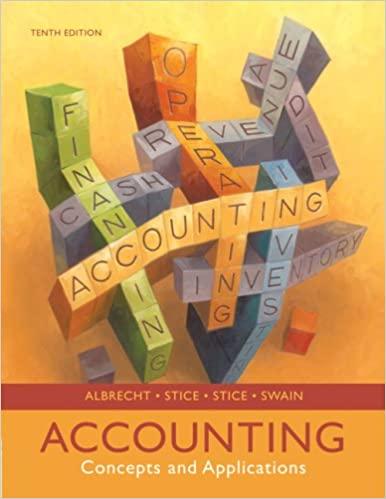Charlie Driver was pleased with the results of 3C Company's operation in year 2005, especially sin he only operated on a part-time basis. In fact, he found the catering business to be not only profitable but also an enjoyable challenge. He decided to continue the 3C Company in year 2006, finish his hospitality and marketing education, and search for a suitable restaurant to acquire and operate. Near the end of year 2006, Charlie found an 84-seat restaurant that had been closed for several months. It was the type of facility he had been looking for. After locating the owner, he reached an agreement to lease the restaurant for five years beginning January 2007. The lease set the first year rental costat $24,000 and stipulated a 10% yearly rental increase in each of the remaining four years of the five-year lease. In addition, the owner agreed to allow Char- lie to trade in the old equipment and furnishings for whatever he can get for them and to purchase new equipment and furnishings. The equipment and fur- nishings were traded in on new equipment with a net cost of $171,524 and new furnishings with a net cost of $53,596. The new equipment was estimated to have a 12-year life with a residual value of $6,500. The new furnishings had an estimated 8-year life and a residual value of $2,620. Charlie realized that for tax purposes and other considerations, he should incorporate a new company as "Charlie's Classic Cuisine Corporation. We will simplify this name to the 4c Company. With the cash he had saved from op- erating the 3C Company and from the sale of the truck, Charlie purchased $50,000 of 4C Company's $2.00 par value common stock. Charlie used his rep- utation and good business record over the past two years to obtain a corporate loan from his bank for $200,000. The loan was to be repaid over the next five years in monthly installments of principal and interest. Although Charlie hired a bookkeeper, he has asked you, a personal friend, to prepare the 4C Company's year-end financial statements and to discuss the results of his first year of operations with him. You agreed to prepare the year- CASE 2 99 end statements from a year-ending unadjusted trial balance of accounts provided to you. To make the necessary adjustments, you are given the following information: Inventory figures in the unadjusted trial are for the beginning of Year 2007. The December 31, 2007, yearend inventories are $5,915 for food and $2,211 for beverages. Accrued payroll of $2,215 must be recognized as of December 31, 2007. Depreciation on equipment and furnishings using the straight-line method must be recognized The bank loan principal to be paid in Year 2008 is $38,260. Using the unadjusted trial and additional information, complete the adjustments and prepare an income statement and balance sheet in the report format for 4C Company for the year ended December 31, 2007. Use an income tax rate of 22% of operating income income before tax), which will not be paid until the Year 2008 The unadjusted trial balance is provided on the following page. 100 CHAPTER 2 UNDERSTANDING FINANCIAL STATEMENTS Credit 4C Company Unadjusted Trial Balance December 31, 2007 Accounts Debit Cash $ 36,218 Credit card receivables 13,683 Accounts receivable 3,421 Inventories, food 6,128 Inventories, beverages 3,207 Prepaid insurance 2,136 Equipment 171,524 Furnishings 53,596 Accounts payable Bank loan payable Common stock Sales revenue, food operations Sales revenue, beverage operations Purchases, food (net) 181,110 Purchases, beverages (net) 38,307 Salaries and wages expense 221,328 Laundry expense 16,609 Kitchen fuel expense 7,007 China and tableware expense 12,214 Glassware expense $ 1,605 Contract cleaning expense 5,906 Licenses expense 3,205 Misc. operating expenses 4,101 Administrative-general expenses 15,432 Marketing expenses 6,917 Utilities expense 7,918 Insurance expense 1,895 Rental expense 24,000 Interest expense 23,981 Unadjusted Trial Balance Totals 5861,448 $ 8,819 163,518 50,000 458,602 0 180,509 5861,448









